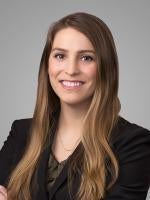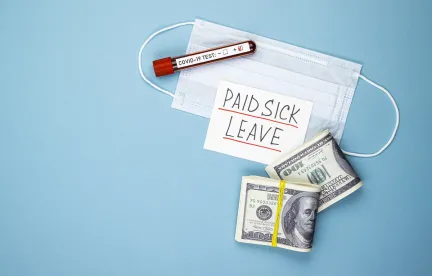On December 22, 2021, the New York Department of Labor (“DOL”) adopted rules (“Rules”) implementing the state’s sick leave law (NY Labor Law §196-b, or the “Sick Leave Law”), providing long-awaited clarification of the Sick Leave Law, which went into effect over a year ago on September 30, 2020. The Rules, codified as Section 196 to Title 12 of the NYCRR, were proposed on December 9, 2020, and adopted without change. In addition to providing definitions of terms used in the Sick Leave Law, the Rules address three topics: (i) documentation an employer may require to verify an employee’s eligibility to use sick leave; (ii) how to count the number of employees an employer has for the purposes of determining employees’ sick leave entitlement; and (iii) how to calculate an employee’s accrual of sick leave. In addition, the DOL’s response to public comments it received after the Rule was proposed, explain how carryover of accrued unused sick leave works.
Documentation: Of importance, employers may not require employees to provide medical verification for sick leave lasting fewer than three consecutive workdays or shifts. Employers may require documentation for sick leave of three or more consecutive workdays, but are limited to requesting an attestation (i) from a licensed medical provider supporting the existence of a need for sick leave, the amount of leave needed, and a date that the employee may return to work, or (ii) from the employee attesting to their eligibility for leave. The Rules prohibit employers from asking for the reason for the leave or for confidential information, including the nature of an illness, its prognosis, treatment, or for details related to the use of safe leave (e.g., details relating to domestic violence or sexual offense). In addition, employers are prohibited from requiring employees to bear any costs associated with obtaining the documentation.
New York City employers should note that the City’s Earned Safe and Sick Time Act (“ESSTA”) prohibits employers from requesting documentation until after an employee has been out for three consecutive workdays.
Determining Employer Size: Under the Sick Leave Law, the amount of leave an employer is obligated to provide to its employees and whether it is paid depends on the size of the employer’s workforce as follows: (i) employers with four or fewer employees must provide 40 hours, which may be unpaid if the employer’s annual revenue is under $1 million , (ii) employers with between five and ninety-nine employees must provide 40 paid hours , and employers with one hundred or more employees must provide 56 paid hours. Although not stated in the Sick Leave Law or included in the Rule, in its response to comments, the DOL advised – contrary to guidance it had previously given – that it “interprets the statute to include all of the employer’s employees nationwide [in the count],” but that only employees working in New York must be provided sick leave under the Law. Thus, for example, an employer with 150 employees nationwide, but only 20 working in New York would be required to allow those 20 employees to accrue up to 56 hours of paid sick leave per year (not 40 hours).
The number of employees employed by an employer during a calendar year is determined by the “highest total number of employees concurrently employed at any point during the calendar year,” including both part-time and full-time employees as well as jointly-employed employees. Of note, jointly-employed employees must be counted by each joint-employer, but are entitled to sick leave from only one joint-employer (i.e., no double-dipping).The Rules do not specify what constitutes joint-employment for Sick Leave Law purposes.
If an employer’s total workforce falls to a lower threshold, the employer cannot reduce the annual accrual cap (e.g., from 56 hours to 40 hours) until the following calendar year. If an employer’s workforce grows and it moves to a higher threshold, employees must accrue additional leave from the date of the new threshold was reached. For example, if an employer increases its workforce from 98 to 110 employees, then the maximum annual accrual would go from 40 to 56 hours, with accruals at the new cap beginning on the date the employer passes the 100-employee threshold. If employees had already reached the 40-hour maximum and had stopped accruing leave, accrual would begin again, at the same statutory accrual rate, until the new accrual cap of 56 hours has been met.
Determining Accrual of Leave: The Sick Leave Law mandates that employees accrue one hour of leave for every 30 hours worked. When determining accrual for time worked in increments of less than 30 hours, employers may round accrued leave to the nearest 5 minutes, one-tenth, or quarter of an hour. However, such rounding cannot, over time, result in a failure to provide for the proper accrual of leave to employees for the time they have actually worked.
Carryover of Unused Leave: In responding to comments requesting clarification as to whether employees must be permitted to carry over unused sick leave if an employer frontloads the maximum amount of sick leave at the beginning of each calendar year, the DOL confirmed that although the Sick Leave Law requires employers to carry over unused sick leave to the next calendar year even when frontloaded, employers have the discretion to: (1) give employees the option to voluntarily elect to use and receive payment for paid sick leave prior to the end of a calendar year or to carry over unused sick leave; or (2) only allow employees to carry over unused sick leave. Regardless of which option an employer elects, the Sick Leave Law explicitly permits employers to cap sick leave use in a calendar year at 40 hours or 56 hours, depending on employer size.
What Employers Should Do Now
-
Employers should review their current sick leave and safe time policies and procedures to ensure they comply with the Rules and consider training supervisors, managers, and Human Resources professionals on the application of the Rules to their workforce.
-
Employers should make sure they limit their requests for documentation to the attestations permitted under the Rules and do not ask for prohibited information, or make requests that would cost the employee money.
-
Small and mid-sized employers should establish procedures to properly count employees to ensure their employees are being provide the correct amount of sick leave in order to provide sufficient sick leave.
-
Employers should review how they calculate accrual of leave to abide by one of the three-time measurements provided in the Rules.
-
For employers in New York City that are covered by New York City’s ESSTA, employers must ensure that their policies align with the State’s Sick Leave Law, in addition to any provisions of the ESSTA which meet or exceed the State law requirements.
-
Those employers who have employees represented by unions and covered by collective bargaining agreements should confirm whether the changes enunciated in the Rules require modification to contract language and practice.







 />i
/>i

